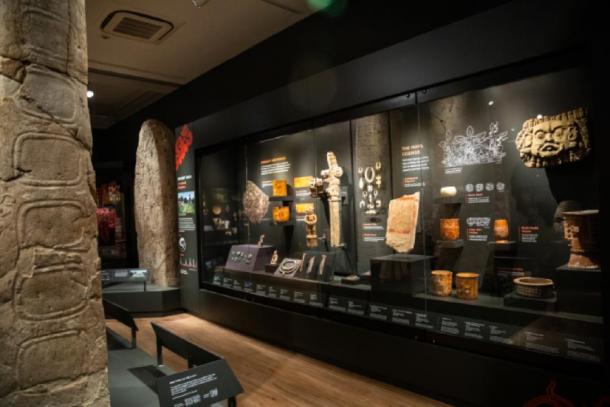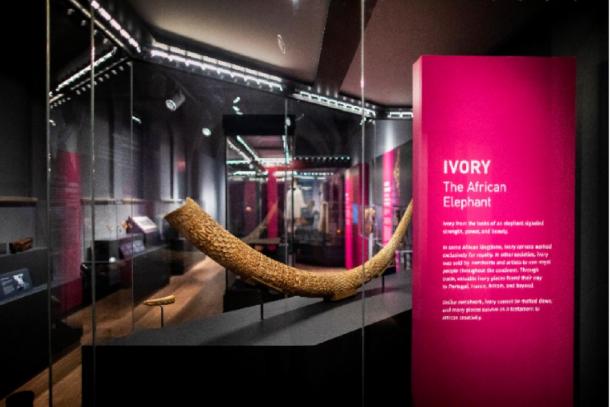
Global Guides Animate the Past in Penn Museum’s New Galleries
The new Penn Museum will include six new 'Global Guides’ from Africa, Mexico, and Central America.
Our technology driven world allows us instant access to documentaries, blogs, and Twitter feeds from almost every village, town, and city in the world. But is tapping a five-inch screen and silently watching a “foreigner” actual “cultural diversity”?
Just in case the answer is “no”, in order to teach about life in other societies, both modern and ancient, the Penn Museum’s Global Guides is an innovative program hiring and training immigrants and refugees from the countries associated with the museum’s ancient exhibits, offering visitors truly immersive multi-cultural experiences.
America’s Museum of the Ancient World Introducing Global Guides
Situated in cold glass museum cases, wooden African Shaman’s masks and jade Aztec daggers from ancient Mexico are presented completely out of context, restricting visitors’ interpretations to a few postcard sized notes attached to the exhibits. Smashing this mold apart, the new Penn Museum will offer “one-of-a-kind” tours aimed at bridging cultural gaps by linking the personal experiences and stories of the Global Guides with the collections of artifacts.

With displays behind glass, only so much of the story can be conveyed. (Eddy Marenco)
Bringing new experiential and emotional dimensions to rare historical objects the Global Guides program also accomplishes the important goal of providing new jobs specifically for immigrants and refugees, who often face real difficulties and endure significant hardship finding and keeping employment. The new Penn Museum will introduce six new Global Guides from Africa, Mexico, and Central America who will join the already successful guides from Iraq and Syria, and while Penn Museum is currently dubbed “America's Museum of Ancient Worlds” it would perhaps be equally as fitting to call it “America’s Castle of the Modern World”.
Revamping the Past with Global Guides
Established in 1887, Philadelphia’s Penn Museum exhibits artifacts from over 10,000 years of human history and according to an article in BJTOnline its recent $102 million revamp included the installation of a modern air conditioning system which covers more than “30,000 square feet (2,787 square meters) of galleries and public spaces”.
In June this year I wrote an Ancient Origins news piece detailing the museum’s application of hi-tech levitation devices to “float” an Ancient Egyptian sphinx representing Ramses II. Originally excavated in 1913 from the Temple of the God Ptah in Memphis, Egypt, on June 12, 2019, the 3,000 year-old artifact, weighing nearly 13 tons (11.8 metric tons), was relocated to a new main entrance hall in what Live Science called a “monumental move” (not my pun). It now sits proudly in the new
- Huge 4000-year-old Underground Hidden Tomb of Cult Egyptian King Senwosret III Will Soon Open to the Public
- Thumbs Down for American Man Who Damaged $4.5 million Artifact
- The Moundbuilders: North America’s Little-known Native Architects

The new Sphinx Gallery is in pride of place near the Penn Museum main entrance. (Eric Sucar, University of Pennsylvania)
Now, the museum’s Mexico, Central America, and Africa galleries have been revamped and will showcase art and artifacts celebrating global craftsmanship and culture, and the museum will reopen to the public this weekend, on November 16, with the Global Guides already revved up and ready to go.
Who Might You Meet?
While passing through the museum’s spectacular new Africa galleries keep an eye out for Clay Katongo who was born and lived in the Democratic Republic of the Congo (DRC) for more than 30 years. As a lecturer in the fields of world religions and Christian world missions Clay told Ancient Origins, in an email, that while he is there at Penn to share stories with you, to bring the artifacts alive, he will conversely be deepening his own “integration in the African Diaspora and contribution in the American workforce and culture”, by being a Global Guide.

You could converse with Clay Katongo in the African gallery. (Eric Sucar, University of Pennsylvania)
And, when wandering through the new Mexico and Central America gallery, maybe Mexico City born Carlos José Pérez Sámano can tell you why his “Earthquake Generation” in Mexico are known for their resilience and commitment to helping others after a 1985 earthquake caused major destruction and casualties. These Global Guides aren’t just walking history books reading from scripts, but they are truly interactive ‘resources’ with no touch screens required to ‘access their data’!
The Future of Ancient and Modern Culture at Penn
Through highly-trained Global Guides sharing stories and generating cross-cultural diversity, Penn Museum hopes to reflect their artifacts in a new light, but don’t for a second think this is the end of developments at Penn, for it really is just the beginning. While the new galleries will showcase an outrageously interesting Egyptian collection within a 6,000 square-foot (557 square meter) exhibition offering visitors a journey from excavation to investigation, ‘new’ Ancient Egypt and Nubia galleries are set to debut in 2022 which will promise not only further employment for immigrants and refugees but will seep even more diversity into the North American culture.

Global Guides aim to bring the glass showcases to life. (Eddy Marenco)
And when I say the new museum is open to the public, I mean “you”, and this has to be said because only last month Julian Siggers, the Williams director for the Penn Museum, told BizJournals there is a lack of awareness that “the museum is open to everybody” and that many people incorrectly assume that the museum is only for people associated with University of Pennsylvania. “Our new brand identity is something we’ve designed very carefully to convey a spirit of openness and an impression that this is a museum for everyone,” Siggers said.
Filling the Need For Jobs
To put these new ‘jobs’ in context, the United Nations Refugee Agency website says “we” (the world) are now witnessing the highest levels of displacement on record with an unprecedented “70.8 million people around the world being forced from home,” with nearly 25.9 million refugees, half of whom, are under the age of 18.
There are also millions of stateless people who have been denied a nationality and access to basic education, healthcare, employment, and freedom of movement; all in a world where many of us walk about with our heads fixed downwards on our technologies. The current statistic is that one human being is forcibly displaced every two seconds as a result of conflict or persecution and while nobody has a catchall solution to reestablishing these “70.8 million people” in new societies, Penn University is doing their part to relieve this escalating global problem in creating Global Guides.
The Penn Museum is celebrating the opening of the new Mexico and Central America Gallery and Africa Galleries, and the Sphinx in its new home on the weekend of the 16-17 November. Opening Weekend Celebration
Top image: The new Mexico and Central America Gallery at Penn Museum. Source: Eric Sucar/ University of Pennsylvania
By Ashley Cowie















